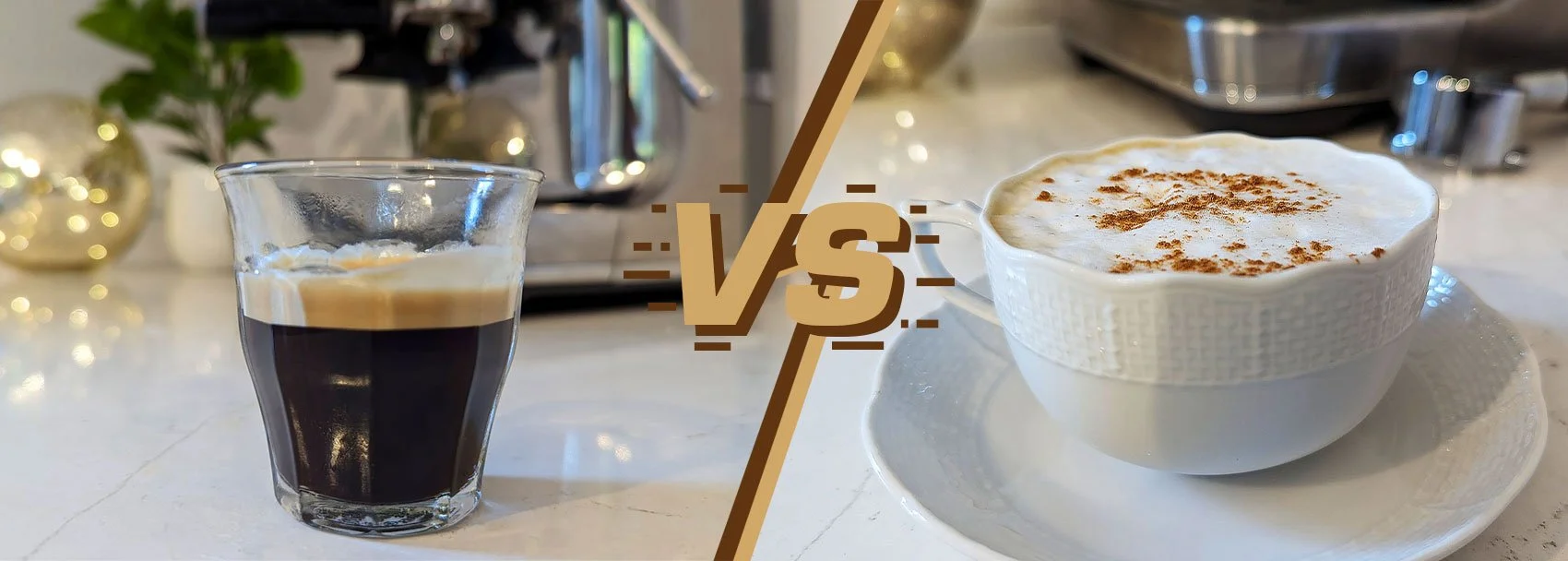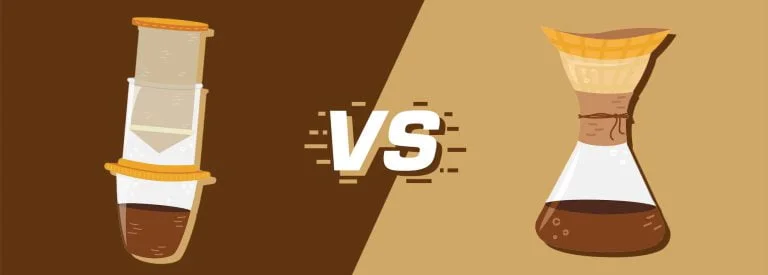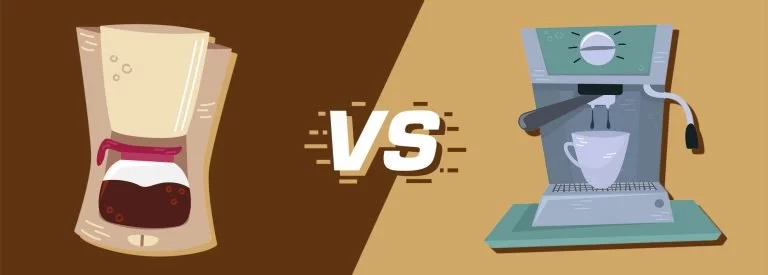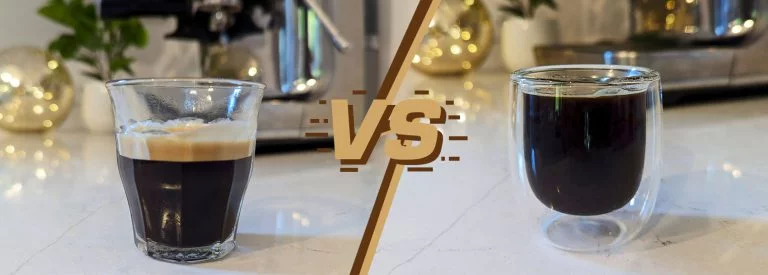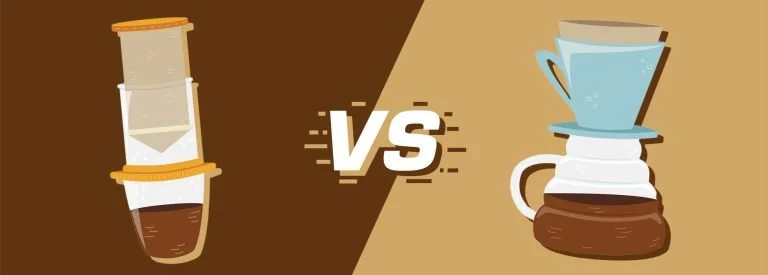Espresso vs Cappuccino: Potent Coffee or Creamy Brew?
Espresso and cappuccino remain iconic in the coffee sphere, but what sets these two drinks apart?
Perhaps you’ve asked this yourself while looking at a café menu. Well, rest assured that you’re not alone. Let me assist you with this guide where I’ll get into the essence of these coffee beverages; from their origins and ingredients to brewing them just right.
What is Espresso?
The story of espresso all started with an Italian entrepreneur named Luigi Bezzera who introduced the world to the first espresso machine in 1901. It offered a fast and potent approach to preparing coffee, which involved forcing hot water through finely-ground coffee.
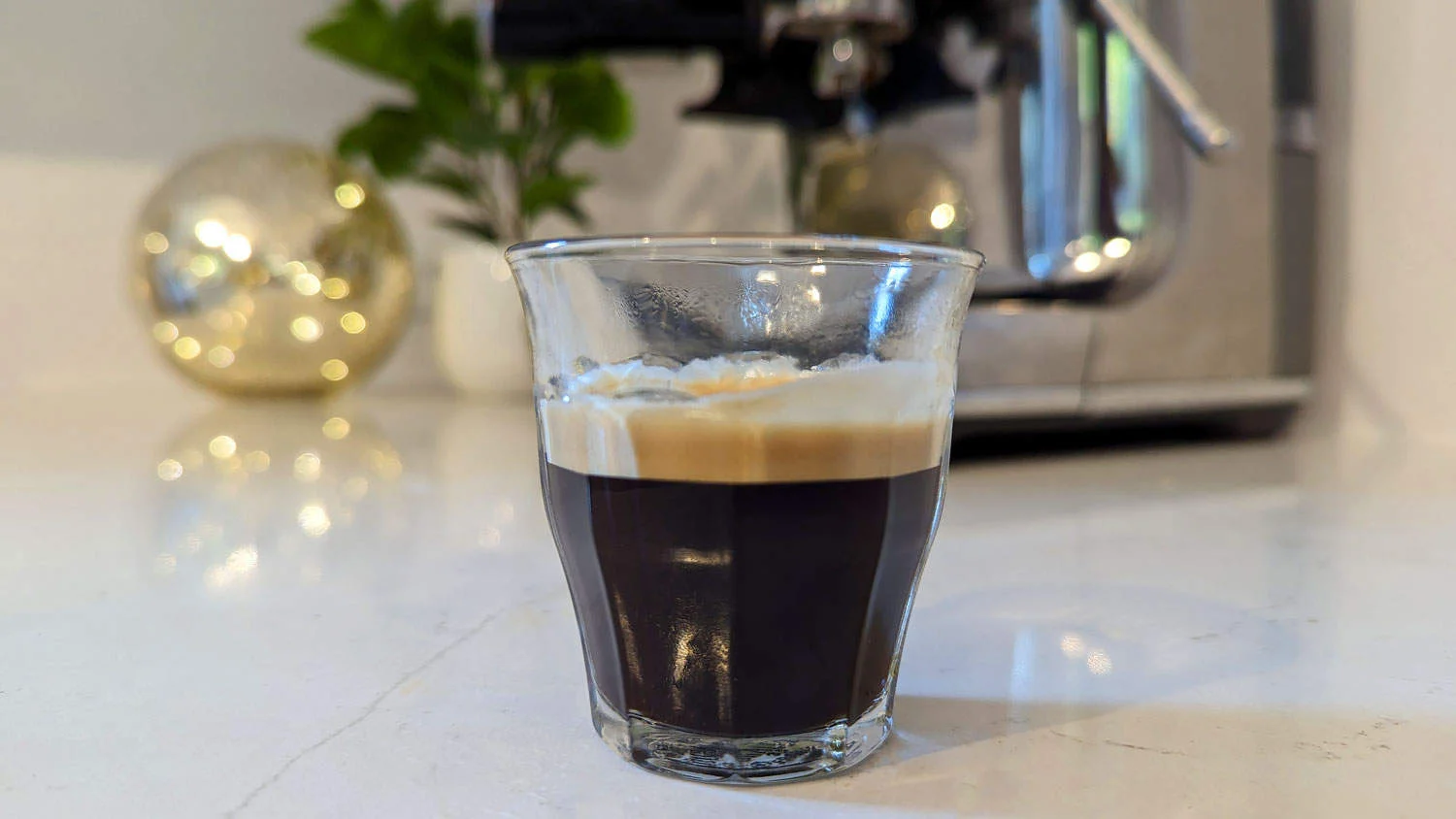
At its core, an espresso shot has a coffee-to-water ratio of 1:2 to 1:3. A single shot is 1 oz (30 ml) while a double shot is 2 oz (60 ml) in serving size. This drink comes in demitasse cups that hold 60 to 90 milliliters (2–3 US fl oz) of liquid.
Each shot packs 60 to 80 mg of caffeine and two calories, but that calorie count is too little, so I just consider it zero.
Discussing espresso taste, think robust and intense. It’s a delicious fusion of natural sweetness, bitterness, and a touch of acidity. Sip some more and you can get notes of chocolate or caramel coupled with nutty undertones depending on the roast level and origin of your beans. The texture is syrupy and top that with the smooth crema layer, you have yourself quite the flavorful cup of coffee (just be sure to mix it before you drink).
Here’s a quick guide to making an Espresso:
- Weigh the coffee.
- Grind your coffee beans to a fine-grind size.
- Level the grinds in the portafilter.
- Tamp with consistency.
- Extract the espresso.
- Analyze and enjoy the taste.
For detailed instructions, check out my step-by-step guide on how to make an espresso.
Now let’s take a look at Cappuccino.
What is Cappuccino?
Dating back to the 17th century when it was first crafted by Capuchin friar Marco d’Aviano, the cappuccino has had centuries to evolve and cement its place in coffee culture.
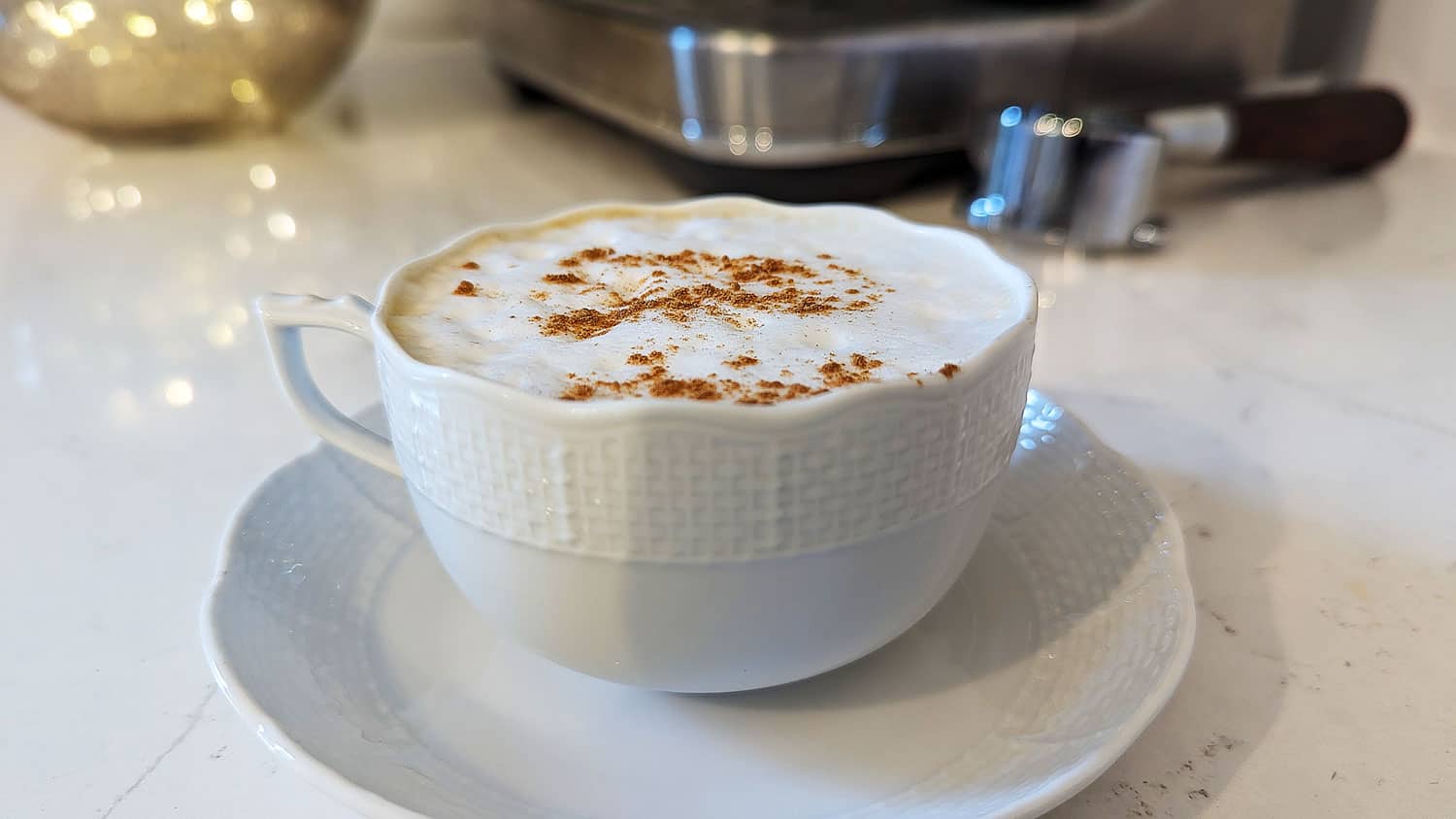
This espresso-based drink strikes a balance with equal parts espresso, steamed milk, and a thick layer of frothy milk foam on top. The espresso maintains a standard coffee-to-water ratio of 1:2 to 1:3 with 7g of coffee for a single shot and 14g for a double shot. Third-wave coffee uses a bit more, brewing with 9g for a shot and 18g for a double.
After the shot is pulled, it’s topped with equal parts steamed milk and milk foam to form a 1:1:1 ratio for its ingredients. While the traditional base is full-fat milk, alternatives like soy, almond, or oat milk can also be used.
The calorie count combines 2 calories per espresso shot and 18 calories per 1 oz of whole milk. A typical 150ml cappuccino, for example, has 74 calories.
The serving size generally ranges from 5 to 6 oz (150 to 180 ml) and is presented in a dome-shaped cappuccino cup with a handle, which can hold between 150-210 ml (5-7 oz).
Taste-wise, a Cappuccino offers a perfect blend of the boldness of espresso and the creamy sweetness of frothed milk. Some even sprinkle cocoa or cinnamon on top for an extra hint of richness. The texture is multi-layered: rich from the espresso, creamy from the steamed milk, and airy from the frothy milk foam.
Want to make one? Here’s how:
- Prepare a single espresso shot.
- Pour cold milk into a steaming pitcher up to the spout’s bottom.
- Heat and steam the milk to around 160 degrees Fahrenheit, aerating to achieve frothy macrofoam.
- Pour the steamed milk and froth over your brewed espresso.
If you’re keen to perfect this, see my guide on how to make a Cappuccino.
Espresso & Cappuccino Compared: Similarities and Differences
Let’s get a clearer picture by laying out a quick comparison of Espresso and Cappuccino:
| Aspect | Espresso | Cappuccino |
|---|---|---|
| Taste and Texture | Robust and concentrated with a dense, syrupy texture. Notes of chocolate or caramel, with nutty undertones. | Balance of bold espresso and creamy sweetness of frothed milk. Multi-layered: rich, creamy, and airy. |
| Coffee-to-Water Ratio | 1:2 to 1:3 | Standard 1:2 to 1:3 for the espresso part |
| Ingredient Ratio | Just coffee | 1 part espresso, 1 part steamed milk, 1 part frothy milk foam |
| Typical Serving Size | 1 oz (30 ml) for a single shot, 2 oz (60 ml) for a double shot | 5 to 6 oz (150 to 180 ml) |
| Caffeine Content | 60-80 mg per 1 oz shot | 60-80 mg per 1 oz shot of espresso used |
| Calories | 2 calories per shot | 2 calories per shot of espresso, plus 18 calories per 1 oz (30 ml) of whole milk. Total of 74 calories for a 150 ml serving. |
| Acidity | Moderate | Low to moderate |
| Brewing Difficulty | Intermediate | Home barista |
| Bean Roast | Light to medium roasts are preferred, but traditional Italian espresso uses dark roast | Medium roasts are preferred, but dark roasts also work |
Now, let’s get into the details with their distinct differences:
- Ground Coffee Weight & Ratios: Traditional espresso uses 7g of ground coffee for a single shot (1 oz) and 14g for a double (2 oz) while third-wave coffee uses 9g and 18g respectively. Meanwhile, Cappuccino uses the same amounts for its espresso, but with added equal parts steamed milk and frothy milk on top.
- Taste: Espresso has an intense flavor profile with a balance of sweetness, bitterness, and acidity, often unveiling notes of chocolate or caramel. Meanwhile, the added milk and milk foam in a Cappuccino delivers a tamed sweet flavor with a creamy consistency when combined with the bold espresso shot.
- Volume, Calories, & Caffeine: Espresso is typically served in smaller volumes (1-2 oz) and has only 2 calories per shot. Cappuccino, being a larger drink (5-6 oz) thanks to the added milk, has more calories, about 74 calories per 8 oz (150 ml) serving.
- Bean Roast: For espresso, I go for light to medium roasts which bring out vibrant flavors with hints of citrus or floral notes. However, traditional Italian espresso is brewed mostly with dark roast Arabica beans. Check out my list of the best espresso coffee beans to learn more.
As for Cappuccino, I prefer medium roasts for a balanced cup, though my mood sometimes calls for the intensity and richness of dark roast. I’d steer away from light roasts because the bright and acidic features don’t go well with milk. - Steamed Milk: Unlike espresso, Cappuccino comes with steamed milk and frothy milk foam, each equal to the amount of the espresso base. You can steam and froth full-fat milk or alternatives like soy, almond, or oat milk. Read my detailed guide to steaming milk to help you.
- Serving Suggestions: I recommend enjoying your espresso with a glass of sparkling water on the side to cleanse your palate in between sips. For Cappuccino, it pairs deliciously with chocolate, biscotti, or nuts, and a sprinkle of ground cinnamon on top can really elevate the experience.
As you can see, espresso and cappuccino are very different. While the latter uses espresso as its base, the added milk reduces the intensity of your coffee and makes it creamier.
Conclusion
If I have to pick between espresso and cappuccino, I lean towards the intensity and potency of espresso. The compact serving and robust taste really hit my palate right, especially when I want to fully appreciate the flavors of my coffee beans.
But that’s just my cuppa as a fan of strong coffee. How about you, do you like the robust espresso or the milky cappuccino? Share your thoughts in the comments below.

